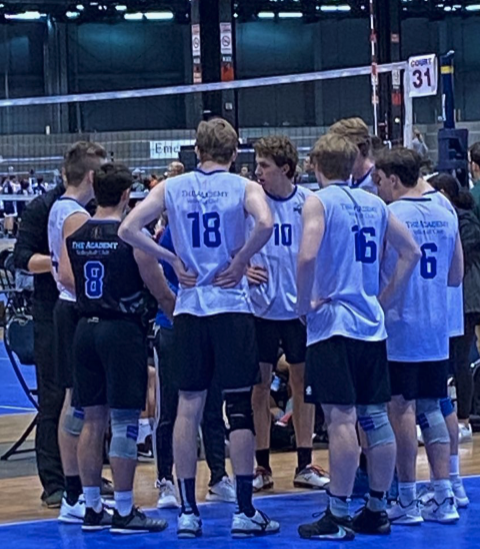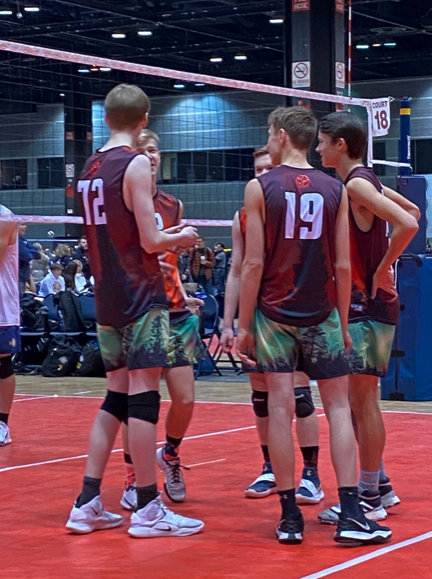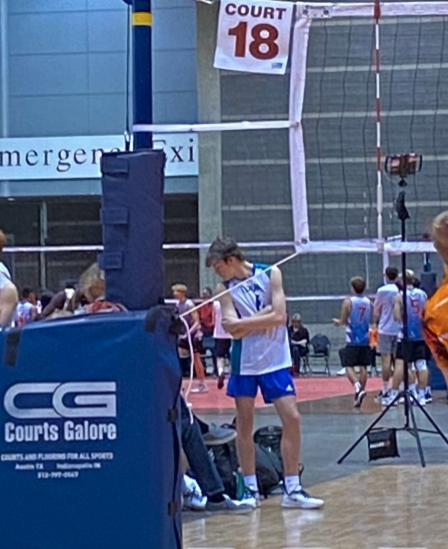
Building a Coat of Emotional Armor
To pass time in between my son’s Club Volleyball games in fancy places like the Anaheim Convention Center or McCormack Place, I ponder “how could I make them better?” My volleyball days were limited to 8th period gym class my junior and senior at Larkin HS where rules were limited. My knowledge of the game is minimal and I’m still trying to figure out all of the signals by the referee. I saw two red cards last weekend but I couldn’t figure out the infraction or the penalty. I know it’s important to play “aggressive volleyball” which usually results in a lot of balls going out of bounds or serves going into the net.
Before we get to my strategy, let’s assess the typical high school male athlete. Most high school boys are NOT aggressive. They’ve been punished for their aggressiveness. Dominant males are frowned upon. Winning by a large margins is politically incorrect. Pressure comes from parents and social media. Celebration is often overdone because that’s what kids see on YouTube and commercials. Parents talk a lot about the coaches and it’s rarely positive.
So, to bolster my athletes, I would build them a coat of emotional armor.
Posture and the Body language of intent
Body language can play a huge role in how well an athlete plays. If we follow the concept that brain follows body and body follows brain, a slouched posture with all of the weight on one leg can only mean negative before and negative after. Just as importantly, what does this communicate toward the opposing team? Is the “I am weak and vulnerable signal” a good one to send to the other side? If you are a leader, what does the “I am weak and vulnerable signal” communicate to your teammates? Even if things are starting to slide away, a strong posture would signal to the opposing team that it’s just a matter of time before the tide changes.
What about the body language of intent? This is the posturing of something that is going to happen. The intent to do something. Want to see it work? Clench your fists, broaden your shoulders and get a forward body lean like the bad terminator in Terminator 2 and walk through a crowd and see the response of the people coming toward you. That is the body language of intent. We can intimidate with just our posture. We can cause the opposing team to question if they really want to have a go. Now they have something else to think about. Because the way society is today, most will back down.
Breathing
We are all told to take a big, deep breath to relax. I have watched hundreds if not thousands of kids take a deep breath as they step up to the starting line, about to shoot a free throw, or a make a serve. This is a big deep breath. If you are part of the RPR tribe, we know this is not the best deep breath. A big chest breath actually make things more intense. It starts you down the path of the sympathetic response of fight or flight which brings with it all of the negatives with the elevated heart rate and a collapsed body posture (see below picture).

Even my own son falls prey to the dreaded chest breath. In Anaheim, in an early game, when he went to serve, he would take a big deep chest breath and serve. He hit one out of four into the net. After the game, in the only coaching I have done for both of my children in their careers, I reminded him of his breathing. His response was “Oh, yeah.” He would belly breath before a serve and his percentage was much improved for the rest of the tournament. The belly breath or performance breath helps keep us in the parasympathetic state. Our heart rate lowers, decisions improve, the game seems to slow down, and it improves our body language.
Below is another example of body posture that certainly will not send a threatening message to your opponents but scream uncertainty and timidness. (Check out the header pic, too.)

Self Talk
Self-talk should be simple, direct, and constant. When Douglas Heel would work with athletes, he would use “I am the greatest”. We would have an athlete do some vertical jumps and when they felt they hit their best, we would take a short break and instruct the athlete to say “I am the greatest” 10 times. They would jump again and most of the time hit new records. Strangely enough, we have had similar results using color. Athletes would wear a pair of tinted glasses that we figured was their strong color and had them jump. Mostly we would get some good improvements. Regardless of the input, the body is getting a constant source of positive self-affirmations that will fuel the body language and build resilience to all of the shortcomings in a competition. And it is certainly better than telling yourself you suck every play.
Here is a video of my son doing everything wrong even though it looks good on film. He starts with a big chest breath which automatically puts him into a fight or flight response. Then he does his “prayer” as if he is praying that the ball goes over the net. There is nothing about his approach that states “I am about to dominate”.
Group Talk
Like the self talk, it should be short and positive. The traditional, YouTube hype of “LET’S GO!” and “YOU GOT THIS!” only infer that something bad has happened or you weren’t going anywhere before. My personal favorite was my football team’s huddle, who just did three belly breaths together and then called the play.
Amnesia
Amnesia is something that we talked about quite a bit when I was at York High School. It is quite simply when bad things happen the athlete moves on unaffected. In practice we can do things to put pressure on our athletes and see how they respond, but really amnesia is a culmination of all of the previous tips that have been mentioned above. If everything is in line mentally, and a few bumps in the road should not derail your athlete. So, if you “pile on” an athlete in practice to see how they respond, just remind them to breath, posture and self-talk.
When you add all of this up, the game becomes secondary and a player starts to enter “THE ZONE” and the focus shifts from external to internal.
